Fruits are an essential part of daily life in Vietnam. From street corners and bicycle shops in the north to the endless fresh garden of tropical fruits, there is a perfectly colorful pile of tropical fruits all over the S-shaped country. Be adventurous and dive into the wonderful world of Vietnamese fruits with our guide.
Fruits are an essential part of daily life in Vietnam. From street corners and bicycle shops in the north to the endless fresh garden of tropical fruits, there is a perfectly colorful pile of tropical fruits all over the S-shaped country. Be adventurous and dive into the wonderful world of Vietnamese fruits with our guide.
1. Dragon Fruit | Thanh Long
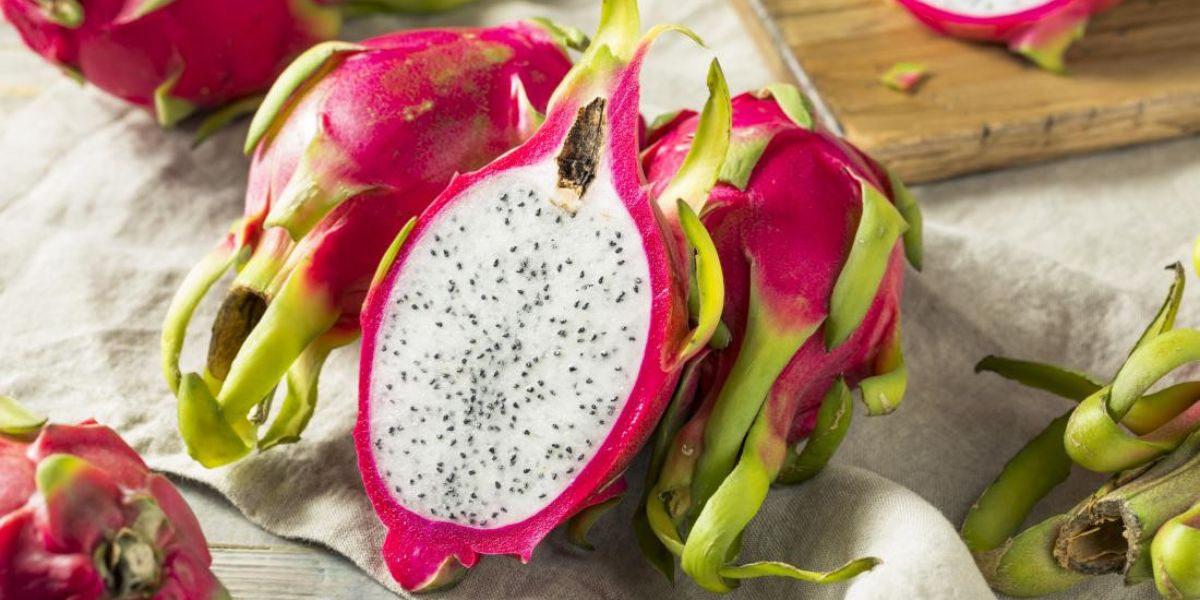
A direct translation for its name, dragon fruit is widely cultivated in the Mekong Delta. Dragon Fruit has a bizarre appearance, with thick Fuschia rind and thin green extensions. Inside, the meat is white or purple with small seeds.
Dragon Fruit is easy to enjoy: just slice it and remove the thick rind. While it has many health benefits, this fruit is actually not very fragrant and has an almost watery taste. It is usually enjoyed by the Vietnamese at the end of a meal as a great dessert for everyone in the family.
2. Mango | Xoai
.jpg)
Mango maybe one of the most popular fruits on the list, but in Vietnam, they are absolutely worth a try. Vietnamese love to eat green mangos as a snack, which is dipped in chili salt and minced in a hearty green mango salad (goi xoai).
Cut a mango around its big seed with a sharp knife and carefully break the halves apart. Another method is to cut around the seed and make a crosswise cut along the skin. When you bend the shell back, the fruit will almost stand by itself, which makes it easy to eat from the skin. Mango can also be used to make the wonderful and delicious salad that will definitely be a treat on a hot summer’s day.
3. Pomelo | Buoi
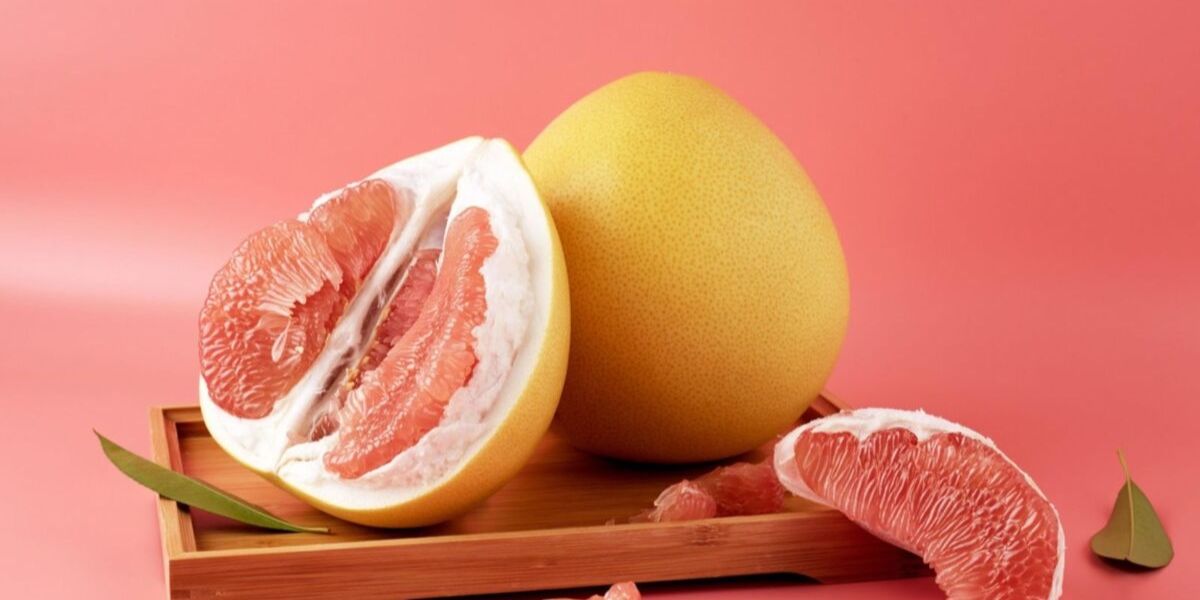
Pomelo is sour like grapefruit cousin, but with a milder taste. Although they may seem intimidating, pomelo is worth the effort. This large, slightly elongated citrus has green and pale yellow colors when being ripe. You can find pomelos in Vietnam all year round. It is even exhibited on special occasions.
Once you have opened the pomelo, you will see the thick white marrow blocking its pale, yellow or pink flesh. The meat, when peeled off the bitter-tasting marrow, is made of numerous segments containing small pips filled with juice. Pomelo is also a popular ingredient in Vietnamese salads such as Goi Buoi.
4. Mangosteen | Mang Cut
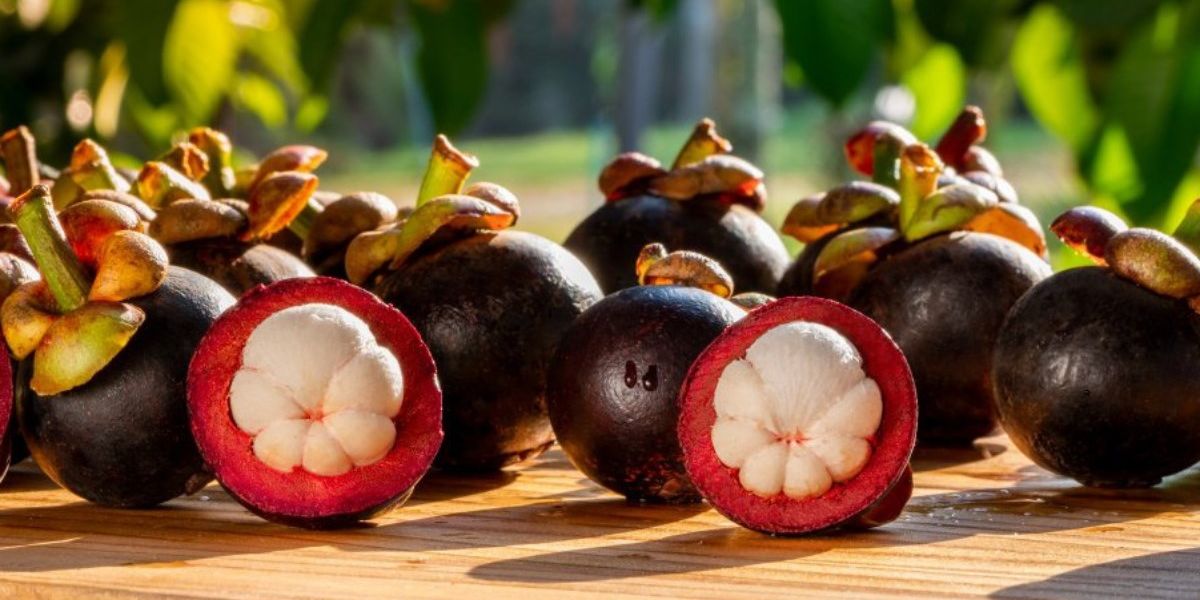
The mangosteen is one of the most exotic fruits that you can taste in Vietnam. It is only available during the season from May to August. With thick purple bark and soft, tangy meats, mangosteens are easy to find in supermarkets and street vendors all over Vietnam.
Gently squeeze the fruit along the middle to break the skin and gently twist the shell apart. Pull out a fruit pod and put it in your mouth to unleash the taste! Attention: larger pods may contain seeds. You can also enjoy mangosteen with a variety of dishes, especially the hearty southern salad.
5. Starfruit | Khe
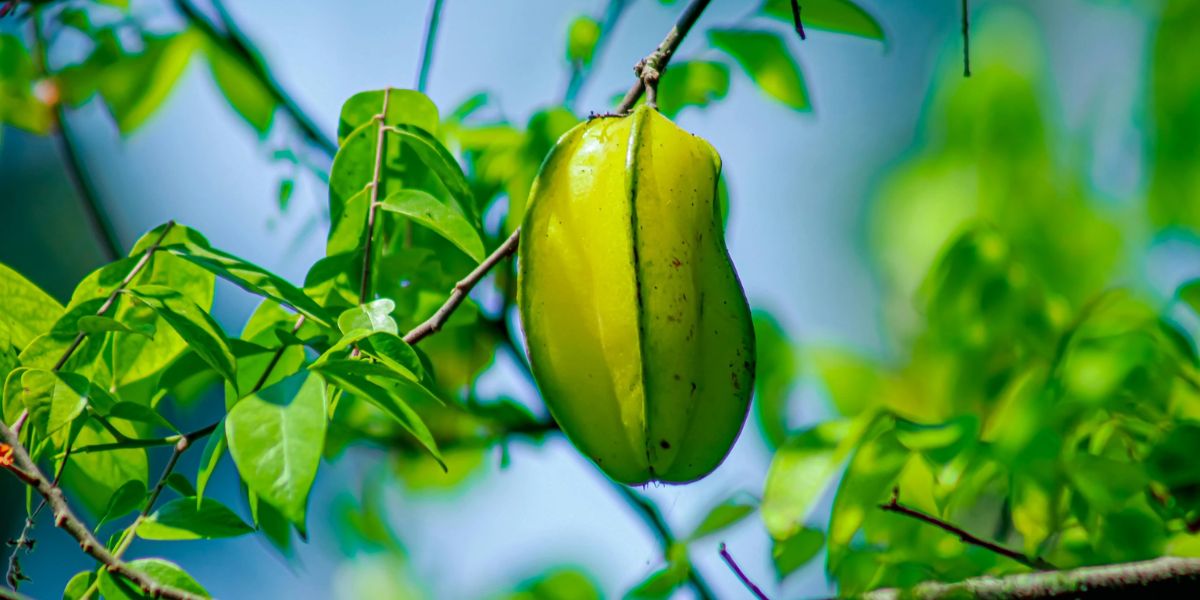
When being ripe with golden color, star fruit is refreshing and juicy. Its season is unpredictable, as the trees bloom twice a year. The good thing is that you can eat this sour delicacy all year round, although you’ll have more chance of finding it in the Mekong Delta.
Cut your star fruit horizontally into smaller pieces and then remove the seeds in the middle. Since the skin is thin and waxy, it is naturally edible and only needs to be rinsed before cutting. Star fruit is also a staple ingredient in Vietnamese sweet-and-sour fish soup called Canh Chua Ca.
6. Rambutan | Chom Chom

Having a funny name of “messy hair”, rambutans are as delicious as they are colorful. Its lively and hairy appearance conceals white, translucent flesh with a mild sweet and sour taste, similar to a grape. This Vietnamese fruits, which are harvested twice a year, are easy to find in summer and even in winter.
Vietnamese love rambutan as a healthy and refreshing fruit. Give the fruit a light pinch and twist to remove the outside and reveal the flesh, then enjoy it! If you can not peel it, just let it ripen a little longer.
7. Guava | Oi

This pear-shaped Vietnamese fruit is about the size of a softball and has a bumpy, light green color. Guatemalan guavas in Vietnam are green with white or pink flesh and have a light, vegetable taste.
Vietnamese people love guava, and eat it ripe or immature, cut into pieces and dipped in chili salt. The mild and slightly sour taste of the guava goes well with the salty and spicy flavor.
8. Passion Fruit | Chanh Leo
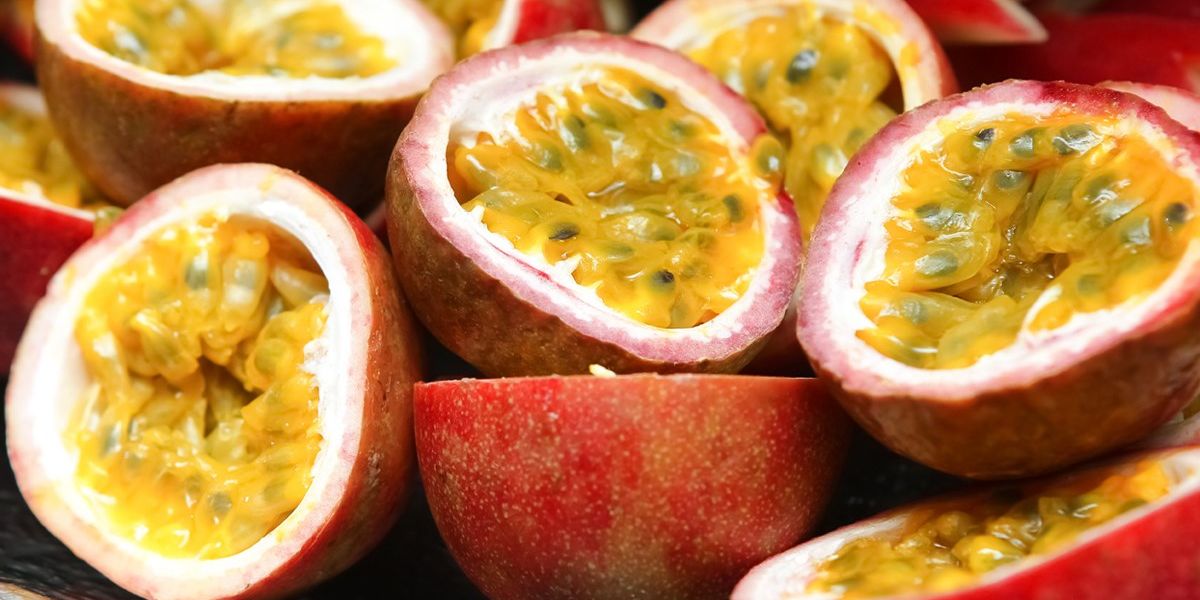
Violet colored and about the size of a tennis ball, passion fruit is a popular ingredient in Vietnamese cuisines. The seeds are edible and are often mixed with ice and milk to make smoothies or simple drinks like lemonade with a refreshing and sour flavor. Passionfruit can be found in street cafes in every season. Try it as juice (nuoc chanh leo) or with yogurt, grated ice and a hint of sugar (sua chua chanh leo).
The thick rind can be gently pulled apart in your hands. Inside passion fruit, you will find soft yellow meat and black seeds, which can be taken out with a spoon and used to make tarts and refreshing drinks.
9. Longan | Nhan
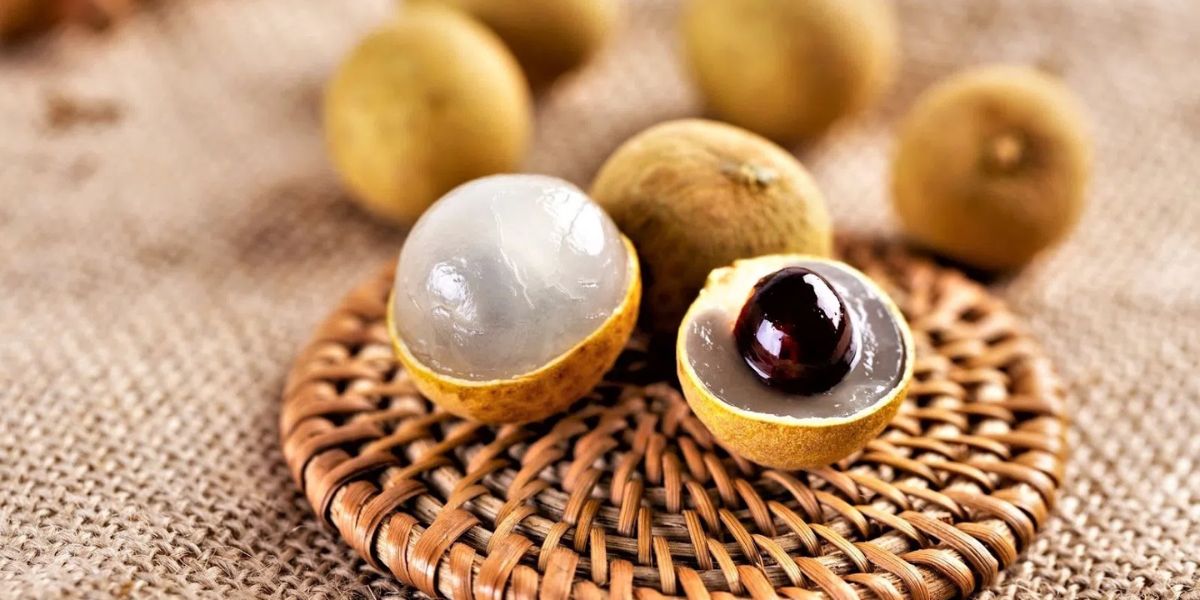
Longan is a popular fruit in Vietnam and can easily be spotted in big bushels on the many street markets around the country. In Vietnamese, longan means Dragon’s Eye. This fruit is often compared with lychee but has a slightly sweeter taste and more meat.
Peel off the thin and brittle brown skin to show the translucent fruit that holds a hard and shiny black seed. Vietnamese often enjoy longan alone with a cup of tea or in iced sweet soup with lotus seeds as the perfect treat on a hot summer’s day.
10. Star apple | Vu sua

The Vietnamese name for star apple means mother’s milk and is associated with an old fairy tale. This spherical fruit is about the size of an orange, with a dense, shiny skin in violet or green tones. The skin and bark are bitter, but the fruit inside is white with a soft sweet taste.
Mostly grown in orchards from the Mekong Delta and central Vietnam, there are two ways to taste star apples like a local. You can cut it in half and take out the meat with a spoon (watch out for large and inedible seeds), or you can squeeze and roll to release the juice inside, and then puncture a hole in the ground to get the juice to suck out milky juice.